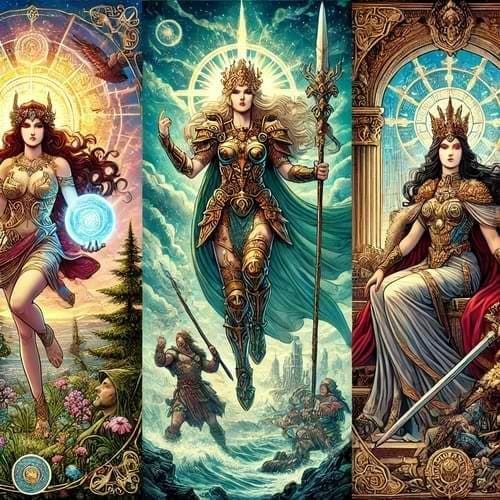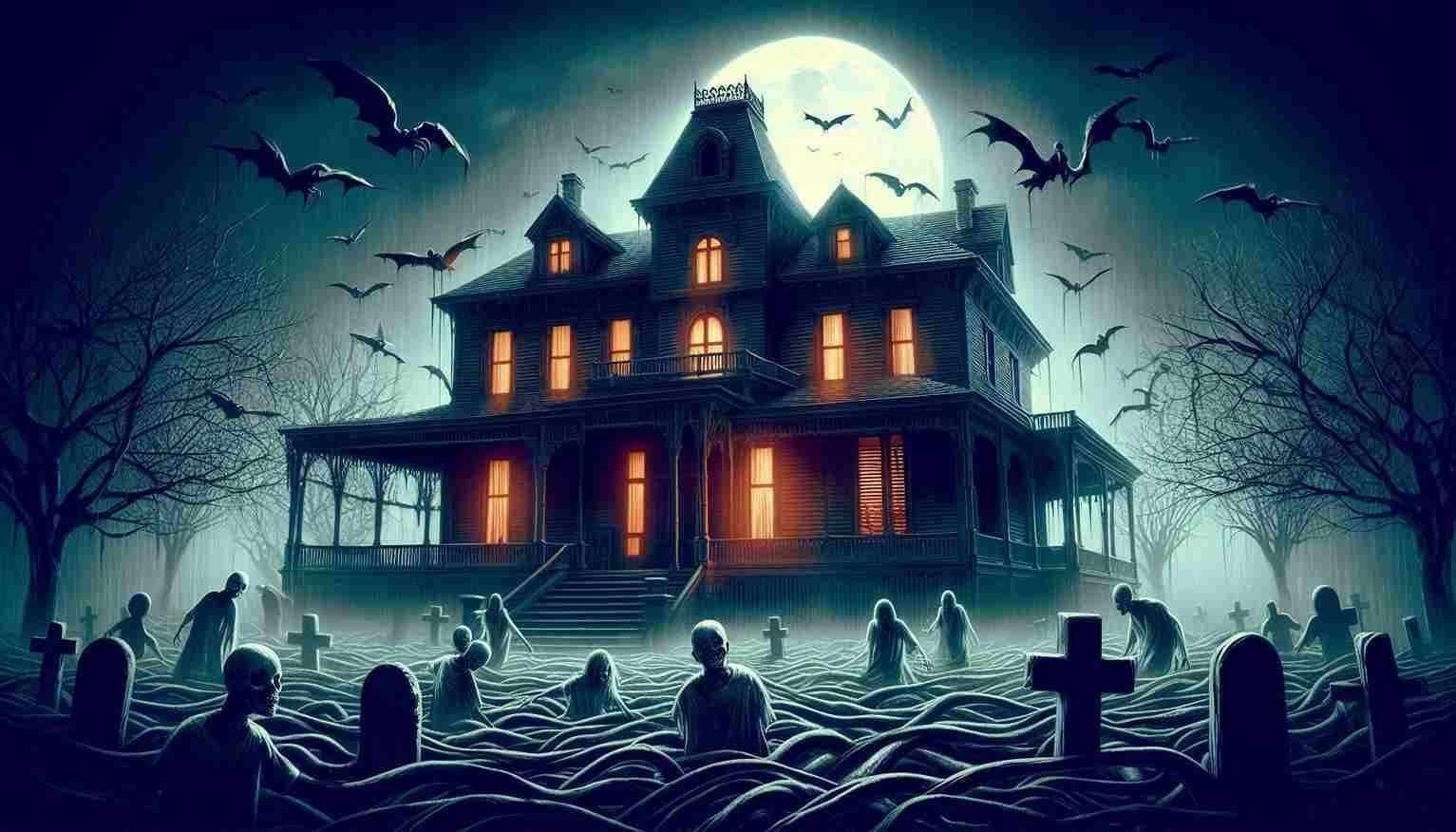Welcome, dear listeners, to a spine-chilling exploration into the depths of Slavic folklore. Tonight, we delve into the sinister realm of Baba Yaga, the witch whose name alone can send shivers down the spine. Join me as we unravel the horrifying mysteries of her cursed hut and the dark influence she casts upon modern witch archetypes. Brace yourselves for a journey through the shadows, where nightmares and folklore intertwine.
The Haunting Figure of Baba Yaga
Picture a forest so dense it swallows the light, where the air is thick with whispers of ancient curses. In this foreboding landscape lurks Baba Yaga, a spectral figure from the darkest corners of Slavic mythology. She is not merely a witch; she is a terrifying embodiment of primal fear. Her appearance is grotesque: a skeletal crone with gnarled hands, a nose so long it curves around her face, and eyes that pierce through the soul.
Baba Yaga’s presence is more than physical. She is a chilling force of nature, a harbinger of doom wrapped in the guise of a hag. Her abode, a hut perched precariously on chicken legs, is a nightmarish creation. It’s said to pivot and spin, shifting its location with an eerie, creaking sound that echoes through the forest. This unnatural movement adds to the horror, making her dwelling a place of relentless unease.
The Hut on Chicken Legs: A Portal to the Macabre
Now, let’s peer closer into the heart of Baba Yaga’s domain. The hut itself is a grotesque marvel. It stands on spindly, bone-like chicken legs, and it is said that the hut dances on these limbs, spinning in the moonlight as if mocking those who dare to seek it. Its movements are not just a whim but a chilling defense mechanism, guarding its mistress from unwelcome guests.
To enter the hut, one must recite a sinister incantation. Those who fail to perform the ritual correctly find themselves lost in an endless forest, their screams swallowed by the dark. The hut’s windows, like hollow eyes, watch with malevolent intent, and its door creaks open with a sound that resonates like a death knell. Within, the walls are said to be lined with the grim trophies of Baba Yaga’s victims: bones, skulls, and other macabre relics.
Also check: Mythological Creatures of Asia
Baba Yaga’s Role in the Dark Tapestry of Folklore
In the realm of Slavic folklore, Baba Yaga is not merely a witch but a terrifying figure who straddles the line between the living and the dead. She is often portrayed as a cannibalistic menace, consuming those who stumble into her domain. Her hunger is not just for flesh but for souls, a reflection of her insatiable malevolence.
The stories of those who encounter Baba Yaga are steeped in dread. Heroes and heroines must navigate a gauntlet of nightmarish trials, each more harrowing than the last. These trials are not merely tests of strength but challenges to the very essence of their being. They must confront their deepest fears and darkest desires, for Baba Yaga’s trials are designed to unravel the psyche.
The Terrifying Influence on Modern Witch Archetypes
Baba Yaga’s dark legacy extends far beyond the foggy depths of Slavic forests. Her terrifying image has cast a long shadow over modern depictions of witches, infusing contemporary horror with her eerie essence. Her archetype—the old, malevolent witch with boundless power and a hunger for the souls of the unwary—continues to haunt our screens and pages.
In literature and film, Baba Yaga’s influence is palpable. Modern witches often echo her characteristics: they are fearsome, mysterious, and embody both wisdom and terror. Characters inspired by Baba Yaga are frequently depicted as beings who wield dark magic with a chilling indifference to human suffering. They operate from hidden, otherworldly realms, much like Baba Yaga’s shifting hut, adding an element of inescapable dread.
Also check: The Evolution of Folklore
From Page to Screen: The Modern Haunting
Baba Yaga’s presence in modern media amplifies her horror. Films and television shows draw upon her nightmarish imagery to create powerful, fear-inducing characters. Her influence can be seen in the likes of “The Witch” and other dark fantasy genres where witches are not just mystical beings but agents of terror. The sense of dread, the malevolent magic, and the hidden dangers of Baba Yaga’s world are woven into these modern narratives, echoing her sinister legacy.
The Eternal Terror of Baba Yaga
As we conclude our journey into the dark heart of Slavic folklore, remember that Baba Yaga is more than a mere tale of terror. She represents the primal fears that lurk in the darkest corners of our imagination. Her hut on chicken legs, her cannibalistic cravings, and her malevolent trials serve as a chilling reminder of the power of folklore to shape and evoke our deepest fears.
Baba Yaga’s legacy endures because it taps into something fundamental—the fear of the unknown, the dread of the dark, and the terror of the supernatural. She stands as a testament to the dark allure of folklore and its ability to captivate and horrify. So, as you leave this tale behind, let the echoes of Baba Yaga’s chilling laughter remind you of the shadows that dance just beyond the edge of the light. Until our next foray into the world of the macabre, keep your senses sharp and your fears close.
References
- Aikhenvald, Alexandra Y. The Nature of Witchcraft: A Study of the Witch Figure in Slavic Folklore. University of Chicago Press, 2012.
- Dundes, Alan. The Morphology of Baba Yaga: A Structuralist Analysis of a Slavic Folktale. Indiana University Press, 1987.
- Kuna, Viktor. Baba Yaga: The Slavic Witch and Her Legends. Eastern European Folklore Journal, vol. 23, no. 2, 2005, pp. 45-67.
- Miller, Michael. Witches in the Forest: The Legacy of Baba Yaga in Modern Media. Horror Studies Review, vol. 15, no. 4, 2020, pp. 82-101.
- Shapira, Elizabeth. Dark Magic and Mythology: Exploring Baba Yaga’s Influence. Folklore and Fiction Journal, vol. 18, no. 1, 2019, pp. 12-29.





Leave a Reply